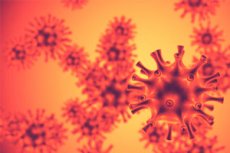New publications
Drug-like inhibitor shows promise in preventing influenza
Last reviewed: 02.07.2025

All iLive content is medically reviewed or fact checked to ensure as much factual accuracy as possible.
We have strict sourcing guidelines and only link to reputable media sites, academic research institutions and, whenever possible, medically peer reviewed studies. Note that the numbers in parentheses ([1], [2], etc.) are clickable links to these studies.
If you feel that any of our content is inaccurate, out-of-date, or otherwise questionable, please select it and press Ctrl + Enter.

Currently available flu drugs only target the virus after it has already established an infection, but what if a drug could prevent infection in the first place? Now, scientists at the Scripps Institute and Albert Einstein College of Medicine have developed drug-like molecules that can do just that, interfering with the first stage of a flu infection.
These inhibitors block the virus from entering the body's respiratory cells by specifically targeting hemagglutinin, a protein on the surface of influenza A viruses. The findings, published in the journal Proceedings of the National Academy of Sciences, represent an important step forward in developing a drug that can prevent influenza infection.
"We're trying to target the very first stage of influenza infection, as it would be better to prevent infection in the first place, but these molecules could also be used to inhibit the spread of the virus after infection," says lead study author Ian Wilson, DPhil, professor of structural biology at The Scripps Institute.
The inhibitors need further optimization and testing before they can be evaluated as antiviral agents in humans, but the researchers say the molecules could eventually help prevent and treat seasonal flu infections. And unlike vaccines, the inhibitors probably won’t need to be updated every year.
The researchers previously identified a small molecule, F0045(S), with limited ability to bind to and inhibit H1N1 influenza viruses.
"We started by developing a high-throughput hemagglutinin binding assay that allowed us to rapidly screen large libraries of small molecules and found the lead compound F0045(S) by this process," said lead study author Dennis Wolan, PhD, senior principal scientist at Genentech and former associate professor at The Scripps Institute.
In this study, the team sought to optimize the chemical structure of F0045(S) to create molecules with better drug-like properties and more specific ability to bind to the virus. To begin, the Wolan lab used “SuFEx click chemistry,” pioneered by two-time Nobel laureate and co-author K. Barry Sharpless, PhD, to create a large library of candidates with different variations on the original F0045(S) structure. By scanning this library, the researchers identified two molecules — 4(R) and 6(R) — with superior binding affinity compared to F0045(S).
Wilson's lab then created X-ray crystal structures of 4(R) and 6(R) bound to the influenza hemagglutinin protein to identify the binding sites of the molecules, the mechanisms of their superior binding ability, and areas for improvement.
“We showed that these inhibitors bind much more tightly to the viral hemagglutinin antigen than the original lead molecule,” Wilson says. “Using click chemistry, we actually expanded the ability of the compounds to interact with influenza by making them target additional pockets on the surface of the antigen.”
When the researchers tested 4(R) and 6(R) in cell culture to confirm their antiviral properties and safety, they found that 6(R) was non-toxic and had more than 200-fold improved antiviral activity in cells compared to F0045(S).
Finally, the researchers used a targeted approach to further optimize 6(R) and develop compound 7, which showed even better antiviral activity.
"This is the most potent small-molecule hemagglutinin inhibitor developed to date," said lead study author Seiya Kitamura, who worked on the project as a postdoc at The Scripps Institute and is now an assistant professor at the Albert Einstein College of Medicine.
In future studies, the team plans to further optimize compound 7 and test the inhibitor in animal models of influenza.
“In terms of potency, it will be difficult to improve the molecule, but there are many other properties that need to be considered and optimized, such as pharmacokinetics, metabolism, and water solubility,” Kitamura says.
Because the inhibitors developed in this study only target H1N1 flu strains, the researchers are also working to develop similar inhibitors for other flu strains, such as H3N2 and H5N1.
